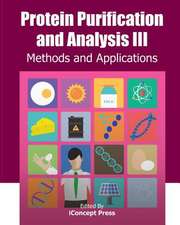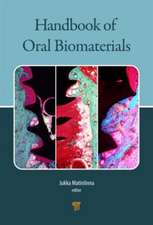Cells, Forces, and the Microenvironment
Editat de Charles M. Cuerrier, Andrew E. Pellingen Limba Engleză Hardback – 2 mar 2015
Preț: 900.86 lei
Preț vechi: 1098.60 lei
-18% Nou
Puncte Express: 1351
Preț estimativ în valută:
172.43€ • 187.36$ • 144.94£
172.43€ • 187.36$ • 144.94£
Carte tipărită la comandă
Livrare economică 21 aprilie-05 mai
Preluare comenzi: 021 569.72.76
Specificații
ISBN-13: 9789814613361
ISBN-10: 9814613363
Pagini: 406
Ilustrații: 67 black & white illustrations, 28 colour illustrations
Dimensiuni: 152 x 229 x 25 mm
Greutate: 0.73 kg
Ediția:1
Editura: Jenny Stanford Publishing
Colecția Jenny Stanford Publishing
ISBN-10: 9814613363
Pagini: 406
Ilustrații: 67 black & white illustrations, 28 colour illustrations
Dimensiuni: 152 x 229 x 25 mm
Greutate: 0.73 kg
Ediția:1
Editura: Jenny Stanford Publishing
Colecția Jenny Stanford Publishing
Public țintă
Academic and PostgraduateCuprins
Micromechanical Cues Converging on Fibroblasts, Cardiac Myocytes and Stem Cells. How Microbes Sense and Respond to Force: a Single-Molecule View. Modulating Cell Adhesion by Non-Covalent Ligand Attachment. Traction Microscopy. The Mechanical Regulation of Myofibroblasts. Mechanically Guided Matrix Remodeling and Prevention of Fibrosis in Regenerative Medicine. Interstitial Fluid Flow Mechanosensing: Mechanisms and Consequences. Mechanical Properties of Cytoskeletal Structures and their Response to Externally Applied Forces. Shape and Mechanical Cues Underlying Cellular Homeostasis in Soft Organs. Muscle Contraction and Sarcomere Length Non-Uniformities. Microfluidic Modeling of Cancer Metastasis. Engineering Strategies to Recapitulate the Tumor Microenvironment. Micropost Methods for Cell Biomechanics of the Cardiovascular System. Dynamic Mechanical Environments to Quantify and Control Cellular Dynamics. Tip Growth in Walled Cells: Cellular Expansion and Invasion Mechanisms. Expansive Growth of Cells with Walls: Force Generation and Growth Regulation.
Notă biografică
Charles M. Cuerrier received a PhD in pharmacology at the Université de Sherbrooke, Canada. He is currently a postdoctoral fellow at the Center for Interdisciplinary Nanophysics, University of Ottawa, Canada, in collaboration with the University of Ottawa Heart Institute. He is the recipient of a postdoctoral fellowship from the Fonds de Recherche du Québec—Santé and of the Ernest and Margaret Ford Research Fellowship in Cardiology.
Andrew E. Pelling received a PhD in physical chemistry at the University of California, Los Angeles, USA, and did his postdoctoral research as a senior research fellow at the London Centre for Nanotechnology, University College London, England. He is currently an associate professor and Canada Research Chair in Experimental Cell Mechanics at the University of Ottawa, Canada. He leads the Pelling Lab for Biophysical Manipulation at the Center for Interdisciplinary Nanophysics, University of Ottawa.
Andrew E. Pelling received a PhD in physical chemistry at the University of California, Los Angeles, USA, and did his postdoctoral research as a senior research fellow at the London Centre for Nanotechnology, University College London, England. He is currently an associate professor and Canada Research Chair in Experimental Cell Mechanics at the University of Ottawa, Canada. He leads the Pelling Lab for Biophysical Manipulation at the Center for Interdisciplinary Nanophysics, University of Ottawa.
Recenzii
"This book is an excellent text for the expert or the learner entering the field of mechanobiology. It covers the cues from the forces exerted on cells and by cells to responses to matrix organization and matrix stiffness in how cells grow, crawl, attach, detach, differentiate, and change phenotype. This field is as driven by new techniques as by new data, and this text provides ample information on both with generous helpful use of color figures and a focus on how we understand the most recent key findings."
—Dr. Geoffrey N. Maksym, Dalhousie University, Canada
—Dr. Geoffrey N. Maksym, Dalhousie University, Canada
Descriere
This book provides a broad overview of how mechanical forces and properties govern diverse aspects of physiological and pathological processes. It also covers new emerging techniques developed to study complex biosystems such as microfluidics, traction force microscopy, and the development of novel biomaterials for tissue engineering. Importantly, chapters in this book are not limited to applications in animal cell biology, but also cover important dimensions in other kingdoms such as plants and bacteria.



















